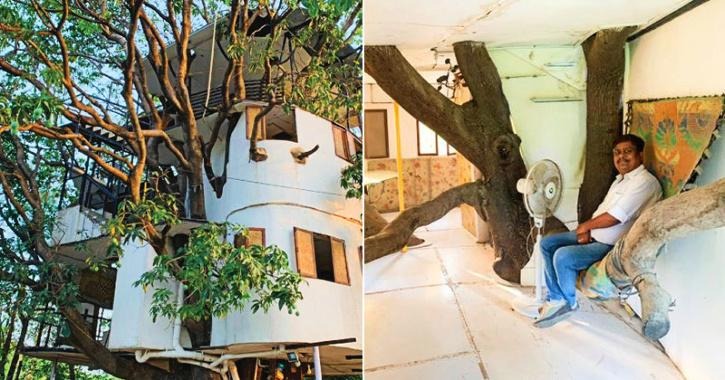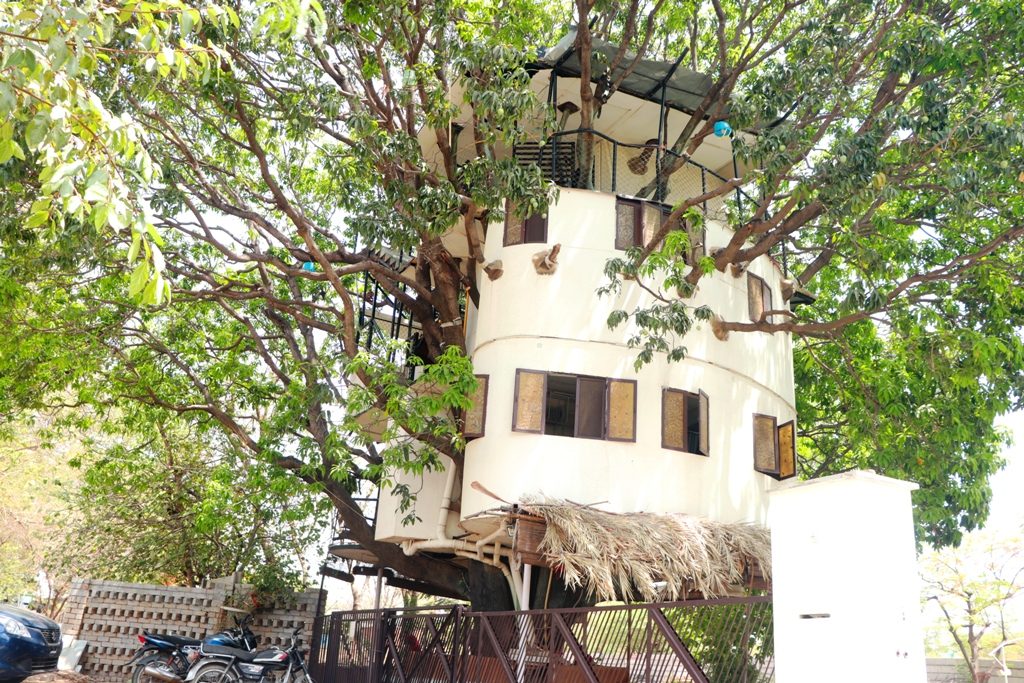There is lesson for every Pakistani how an Indian family build their home without harming a tree, grown and standing tall in the center of their residence. In one of a recent posts, shared on popular Facebook forum the Mera Karachi Group, some interesting comments were offered on a house where special passage were given at the roof for a tree branches to prosper. One says the tree has been hand-cuffed, while some consider the tree a habitat of “Jinnat”, so avoided to be cut down.
As a matter of fact the idea has add the beauty on the exterior of the home with a touch of nature and green cover. That’s why infocus would love to share another story of a family resided in Udaipur, India who live a house built atop a 40-feet mango tree. Kul Pardeep Singh and his family members owns this ecofriendly residence which has three-storey treehouse having two bedrooms, a kitchen, a library and a living area.

Now just assume being able to pluck fresh mangoes without having to move from bed. Or waking up to the sounds of birds right next to you and with their nests built inside your bedroom. But this assumption is a reality in India.
Interior & Exterior
In 1999, Kul Pardeep Singh and his family were looking for a plot in Udaipur with a firm commitment not to harm any trees in this area. “When I told a property dealer to not cut any trees and instead replant them somewhere else, he rejected the idea and left. So I took it as a challenge. Instead of uprooting the trees, I dedicated myself to constructing a house on one. Soon, I got hold of this plot, which had a mango tree in the centre, for a reasonable price,” he says.
It took a year for the construction of Singh’s house to full completion with the help of an architect. The tree was around 20-feet-tall at the time, and the residency was built with two floors. It stands nine feet above the ground and is supported by a tree trunk. The entire structure is made of steel and the walls and floors of the house are made of cellulose sheet as well as fibre. Four pillars are placed around the tree, which act as an electric conductor during lightning.
Co-existence with Living Species
The branches of the tree are inside their kitchen and bedroom. They made necessary changes in the structure according to the growth of the tree. Birds and small animals who dwell in the tree are now their family members. According to Mr. Singh “To co-exist with other living beings is an absolute pleasure, and we love their company.”

Mr. Singh says that seeing this model, interested people have contacted him to build a similar home. This treehouse has found its name in the Limca Book of Records and is visited by many tourists.
May be it looks strange at the moment in Pakistan where concrete and mortar reign on the name of development. Trees are chopped down in cities to give passage to roads and housing schemes. Almost all plantation drives are ceremonious. While green cover in cities and agricultural land in rural areas are diminishing with each passing day.
To be honest my dear colleagues and respectable members of Mera Karachi Group the home of Mr. Kul Singh is really a lesson for all of us. Take care you all and stay safe.
By
Editorial, Infocus


